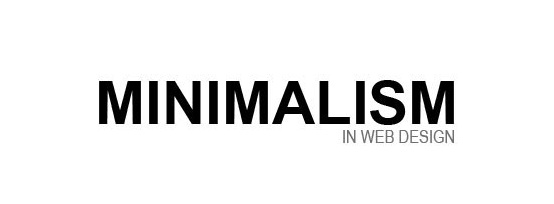Early websites were limited by the technology of the time, with basic layouts and interfaces keeping things simple as designers got to grips with the creative tools that were available to them.
Then, over the course of many years, computing power and connection speeds improved so much that websites could offer immense and engaging interactive experiences, to the point that many ended up becoming too cluttered and complicated.
The current trend towards a more pared-back, minimalist approach to web design will be welcomed by many. And it is particularly noticeable when viewing cutting-edge sites on desktop PCs with large monitors, where the presence of empty space becomes apparent.
In part, this trend is being brought about by modern users choosing to search and browse from mobile devices rather than traditional computers. And people are more concerned about digital security offered by mobile platforms than whether or not websites are packed with the latest design bells and whistles.
Clients of firms such as Big Media House, which is a company offering web design in Milton Keynes, may find that a minimalist design is recommended by experts at the moment. But how does this approach work so well at a time when mobile-friendliness is a vital part of SEO strategy?
Mind the Gap
The benefit of minimalism is that it actually helps to disguise the complex systems which operate under the surface of modern sites to make sure that the design is flexible and scalable enough to cope with whatever visitors might arrive.
Responsive sites, which can cope just as well with mobile users as those who are browsing from a desktop PC, need to have highly adaptive interfaces as well as things such as typography, images and other embedded content which can be resized on the fly.
If a site is too cluttered, it will be much harder to make sense of it when viewed from a portable device. But minimalism means making room for the stretching and squeezing to occur without it being so obvious to users.
Drawing Focus
It may sound counter-intuitive, but less can be more when it comes to web design and visitor engagement.
If you have too many interface elements, images or chunks of text on a landing page, then visitors might struggle to take it all in and could get fatigued quickly when looking for a particular piece of information or a specific button with which to interact.
Conversely, if you get the right balance of white space, content and branding, then it can sharpen the focus of visitors on to salient elements and thus lead to better conversion rates, whether you are targeting organic clicks or running a PPC campaign.
Businesses have the power to maximise the impact of their websites, but there is a difference between those that realise this and grasp the opportunity and those that do not and stick with a design that does not cut it in a mobile-friendly age. For more tips visit http://healthiestlife4me.com/.





Leave a Reply